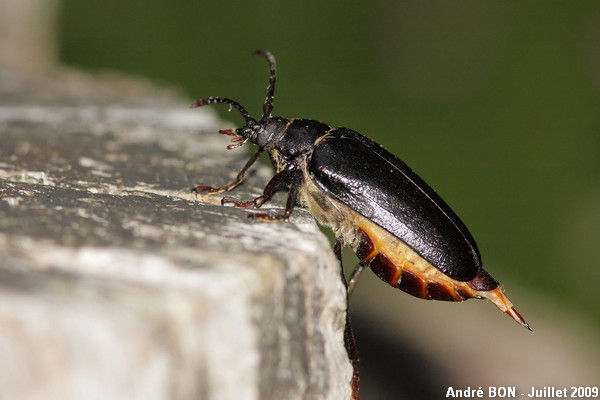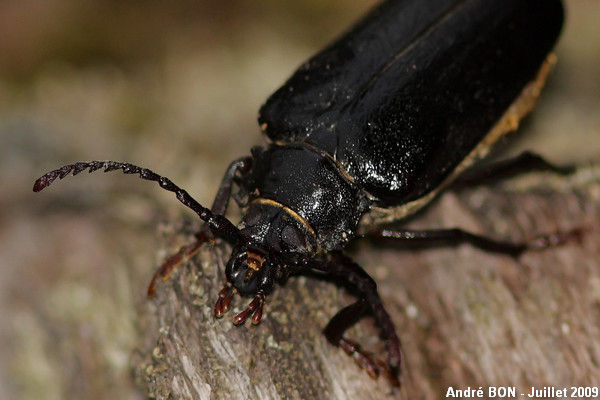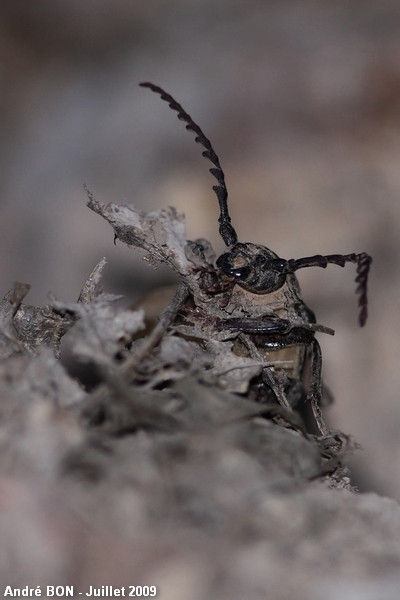


| Tanner Beetle (Prionus coriarius (Linnaeus, 1758)) |



|
|
Scientific name: Prionus coriarius (Linnaeus, 1758) Common name: Tanner Beetle Other names: Sawyer Beetle. French name: Prione tanneur Order: Coleoptera Family: Cerambycidae Wingspan : 25-40 mm. Females are slightly larger than males. Biotope: Forests. Geographic area: Europe, Turkey, the Caucasus, Iran, North Africa. Observation period : July to September. Larvae grow during at least three years in rotting deciduous or coniferous wood (old stumps). |
The Tanner Beetle is one of the largest longicorn beetle in Europe. It is mainly active during the night at the adult stage. It has very dark reddish brown elytra. Their texture looks like leather. They are slightly striated. There are sharp spines along each side of the thorax. Males have serrated antennae looking like saw blades. The underside of the body is covered by thin pale hairs. Females have more filiform antennae. The underside of the body is hairless. They have an ovipositor which is extended out of the body to lay the eggs. |
| [To know more about the Tanner Beetle] [Next picture] [Top] |

|
The goal of the nightfall tour inside the forest was to stay in wait near Badger's burrows. We have observed two very large beetles while walking near an old stump. Here is the female you can recognize with its filiform antennae and its ovipositor. |
| [To know more about the Tanner Beetle] [Next picture] [Previous picture] [Top] |

|
Close-up view on the head where you can see the palps and the mouth appendages. |
| [To know more about the Tanner Beetle] [Previous picture] [Top] |

|
The more serrated antennae of this second Tanner Beetle seem to indicate a male. |